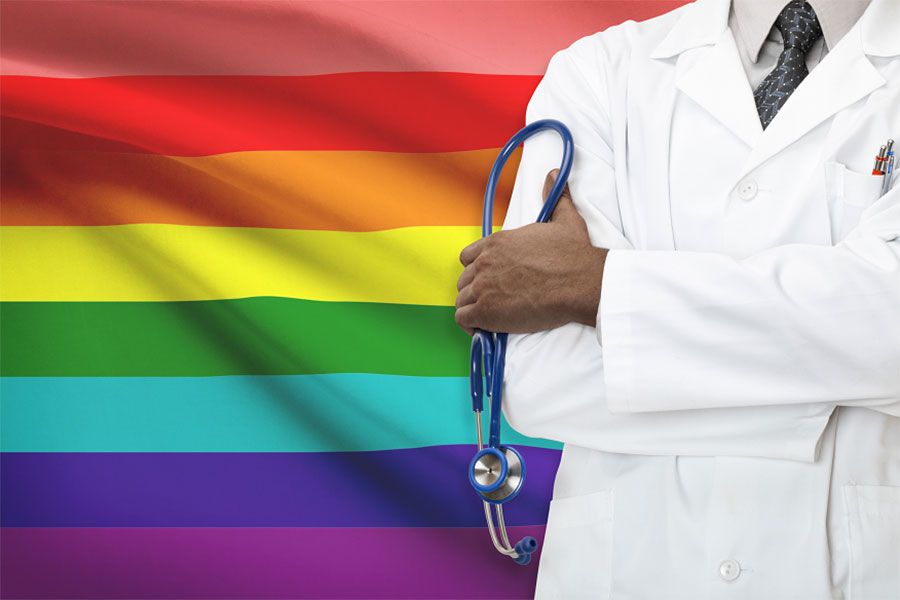
Shane Snowdon and her partner visited many medical offices to seek care for their young son’s chronic illness. The reaction of health care professionals to the couple had ranged from dismissive to impatient, particularly when they saw “father” scratched out on the intake form and “mother” written in its place.
“[We] would watch for how they would react to the [change],” said Snowdon, former distinguished guest faculty at the GW Columbian College of Arts and Sciences, director of the health and aging program at the Human Rights Campaign, and founding director of the Center for LGBT Health and Equity at the University of California, San Francisco. “Some folks would point and laugh. Some would stare at us, then have a discussion: ‘They’re lesbians? Huh, they don’t look like lesbians.’ Someone once said, ‘Oh, that poor little boy,’— and she wasn’t talking about his illness.”
One pediatrician, however, was different. When he scanned the form and saw the scratch-out, he called out for Snowdon’s son and his “moms.” The effect on the child was instantaneous: a smile of his own. The visit also brought no complaints from him, even about the usual injection and blood draw. “It was a totally different—and wonderful—experience for all three of us,” Snowdon said. “No special clinical training, no $5.6 million piece of equipment, just this guy deciding to make our day.”
That kind of treatment — inclusive, accepting, simple — is crucial for LGBT (lesbian, gay, bisexual, transgender) patients, Snowdon explained at the GW Hospital Medical Grand Rounds, “What You Need to Know About Your LGBT Patients.”
LGBT patients can face tremendous stress when seeking medical treatment. Many, particularly transgender patients, have faced discrimination, family rejection, and verbal and physical abuse. Within the health care setting, according to Snowdon, many believe they’ll be treated differently or even refused care.
“Everybody worries going into health care. Everybody worries going into the hospital. But LGBT patients –we have an extra layer of worry — and that’s what you wouldn’t necessarily know if you’re not LGBT,” she said. “Patients should not be this worried. And yet we are.”
The obstacles LGBT patients face range from subtle to undeniable: extra-long waits; over-enforcement of rules, such as visiting hours; biased behavior, including pointing, laughter, and joking; and even verbal and physical roughness. Some health care professionals are reluctant to touch LGBT patients, and transgender patients may face questions about their gender or transition process that are unrelated to their medical needs.
“Transgender patients, like lesbian, gay, and bisexual patients, come in for problems that have nothing to do with being LGB or T,” Snowdon explained. “A provider may say to a transgender patient, ‘I know you’re in here for that large cut on your forehead, but let me just ask you: have you had the surgeries? Are you planning on having those surgeries?’ That’s a hard moment for a trans patient: ‘talk about my lungs, my knee, that large gash on my forehead.’”
So, what can health care professionals do to ease the anxiety of LGBT patients? Snowdon says it starts with language.
“Anyone could be LGBT. Be prepared for that,” she said. “Ask your patients about their partner, rather than their different-sex husband or wife. Ask kids about their family, rather than their mom and dad. A lot of families will love you for this.”
For LGBT patients, Snowdon added, “Use our language back with us, and you can’t go wrong.” In other words, if a patient identifies as “gay,” use “gay,” not “homosexual.” For transgender patients, the same rule applies when it comes to gender: treat the patient as the gender he or she identifies.
“For those of you here in this room, if you can go out and you can model ease with transgender patients, easy acceptance, and going over and apologizing or clarifying name and gender … then it will be huge for other staff,” she said.
Most importantly, however, Snowdon encouraged all to be open-minded. “You are well-meaning, you had a queer roommate in college, your cousin-once-removed is trans, you watch ‘Orange Is the New Black’, Caitlyn Jenner, no problem; but now someone is sitting in front of you,” she said, adding that the response doesn’t need to be complicated. “If you just say warmly, ‘Thank you for sharing that, I know it’s not always easy’ — I can’t tell you what that means.”


